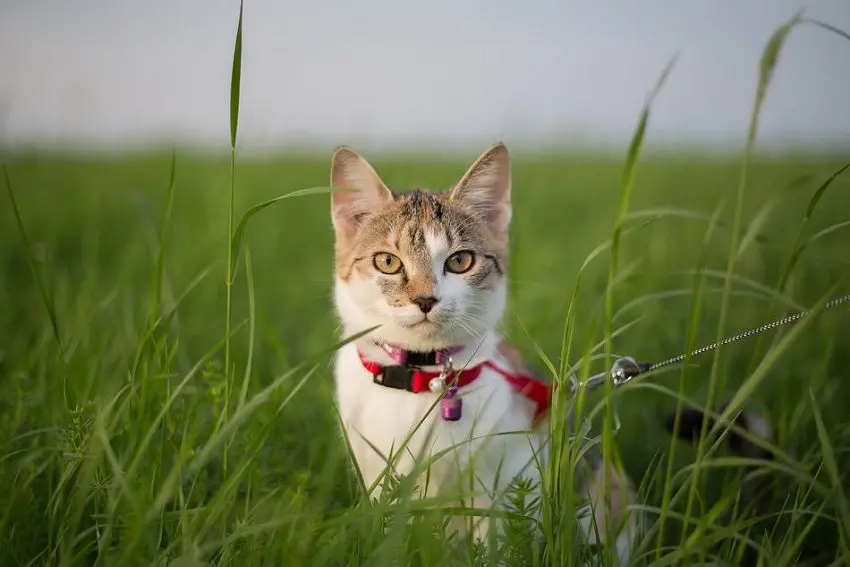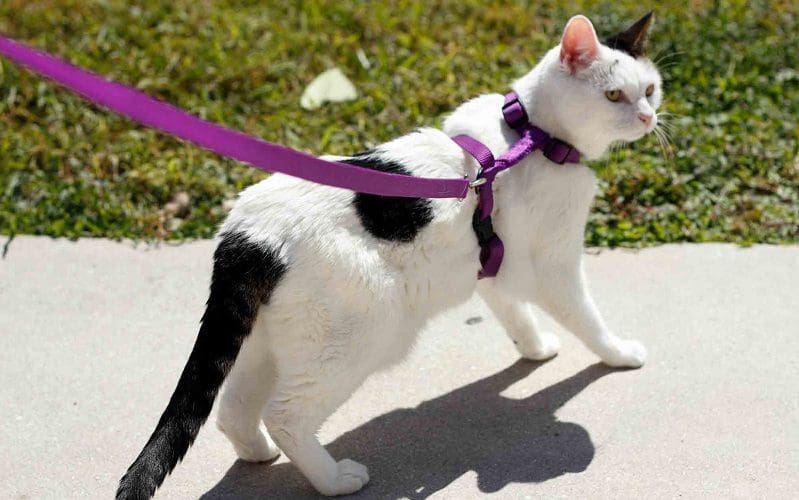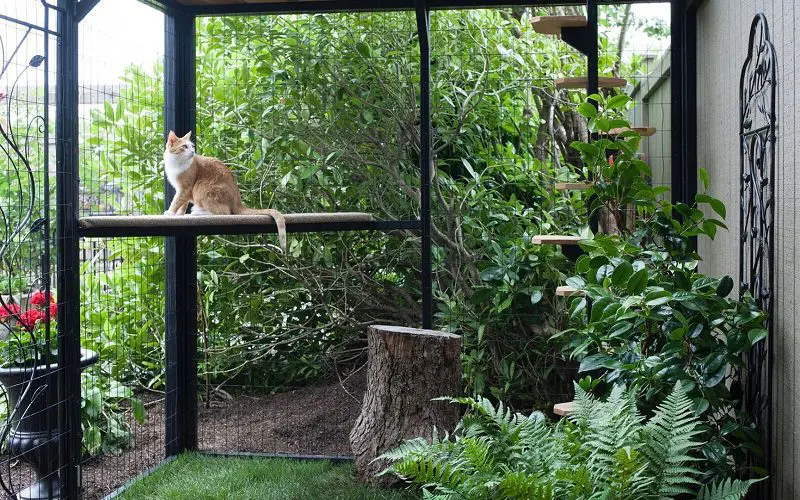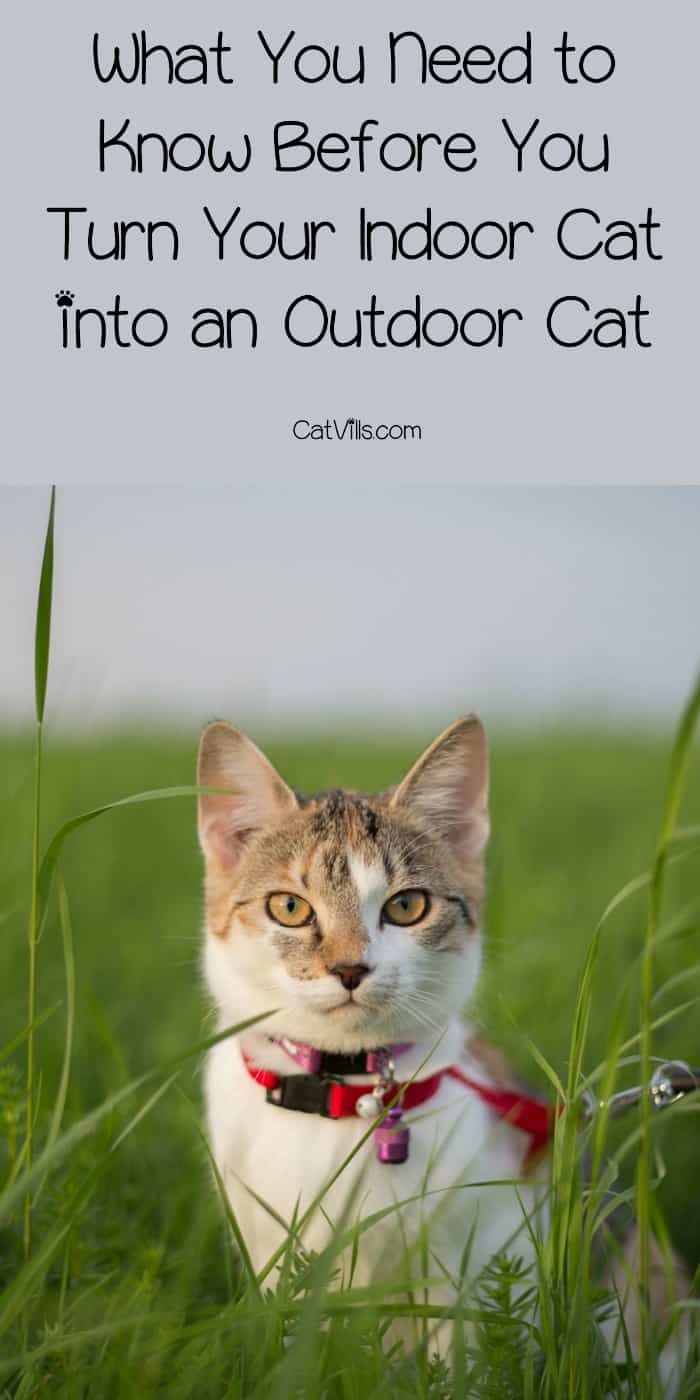Last Updated: 4 months ago
Can an indoor cat become an outdoor cat? In theory, yes, but that doesn’t mean you should just toss Kitty out the door!
Cats, like most creatures, can adapt to almost any situation over time.
Because of this, an outdoor cat can successfully become an indoor cat, and the reverse can happen as well.
That being said, there are many risks to allowing your cat, regardless of their history, to go outside.
Outdoor cats often have a shorter lifespan for a variety of reasons.
Can An Indoor Cat Become An Outdoor Cat? What Are The risks?

In the city, they are at a high risk of traffic incidents, random acts of cruelty, and falls from great heights—especially in the case of apartment-dwelling cats allowed onto an open balcony—while in a suburban or rural setting, they often fall victim to predators.
No matter where they live, outdoor cats are also much more susceptible to illnesses through exposure to other animals, either wild or domestic.
A cat raised indoors may be less “street-wise” when it comes to these kinds of risks and, as a result, more vulnerable.
Keep in mind, too, that curiosity about the outdoors doesn’t necessarily translate to a desire to spend time out there.
I have seen many indoor cats bolt for the outdoors (because, hey, an open door is an invitation) only to “hit the deck,” so to speak, when they got outside, terrified and unsure of what to do next.
Sometimes curiosity about the unknown is the greatest temptation of all, and given cats’ reputations when it comes to curiosity, it may be one best not given in to.
If you do decide to let your cat go outdoors, there are ways to make the experience safer for them.
How to Let Your Cat Safely Check out the Outside World
1. Leash

One of the best ways to expose your indoor cat to the outside world is to train them to walk on a leash.
It may sound laughable—and some cats don’t take well to it at first—but walking can be a great way to experience the world with your cat.
By letting them explore what interests them and following their lead (within safe limits, of course), you can learn more about what excites them and what they respond to.
2. Enclose Outdoor Space

Another option is enclosing their outdoor space, whether it be a yard or balcony.
Enclosed Run
A fully-enclosed dog run furnished with amenities for your cat can work (keep in mind that cats climb—and climb well—so a fence is likely insufficient for keeping them from wandering).
Many companies have now developed containment options for cats in a variety of designs and for a range of budgets.
You can get screens or wire mesh for balconies that extend from the railing to the balcony above or the wall above the door, and ones that cover the gaps between the rails.
Instructions can be found online for cat-proofing your own balcony as well, and materials can be purchased at your local hardware store or home improvement store.
Cat Enclosure
For larger yards, a dog run, as mentioned above, or a specially constructed cat enclosure can be a great option.
In one of these, the cats can feel the grass under their feet and chase the bugs to their hearts’ content.
If your cats are in the grass, it’s important to check them for ticks when they come inside and make sure they are up-to-date on vaccinations.
Access to food, shelter from the weather, and freshwater is important as well, especially if the cats are going to be out for more than a short period of time.
Fence
If your yard is fully fenced, you can get special fence sections that attach to your existing fence to cat-proof your yard.
These sections extend back over your yard at a sharp angle, making it difficult—or impossible—for your cat to climb up and out of the yard.
Catwalks
Finally, you can get really creative and build catwalks or fully enclosed walkways that connect to windows, doors, or separate openings in your walls.
They allow your cat to explore, climb, or just nap outside in complete safety.
Building your own gives you the freedom to work with your home’s design, and you can disguise it to be an attractive part of your architecture.
Wrap-Up

Cats can be quite happy indoors, as long as their instinctive needs are met.
Toys, perches, playtime, and companions can provide your cat with the things about the outside world that they miss the most.
Cat-safe plants (and any plants in your house should be cat-safe if you have feline fur-babies) can provide your pet with something to nibble on and dig in.
Indoor catwalks can look great, and they satisfy your cat’s urge to explore while often providing you with hours of entertainment.
Overall, the safest place for your cat is indoors, and they will likely live a longer, healthier life with you, never really missing the outside world.
How do you let your indoor cat experience the fun of being an outdoor cat without actually sending him out into the world? Share below!
Resources:


